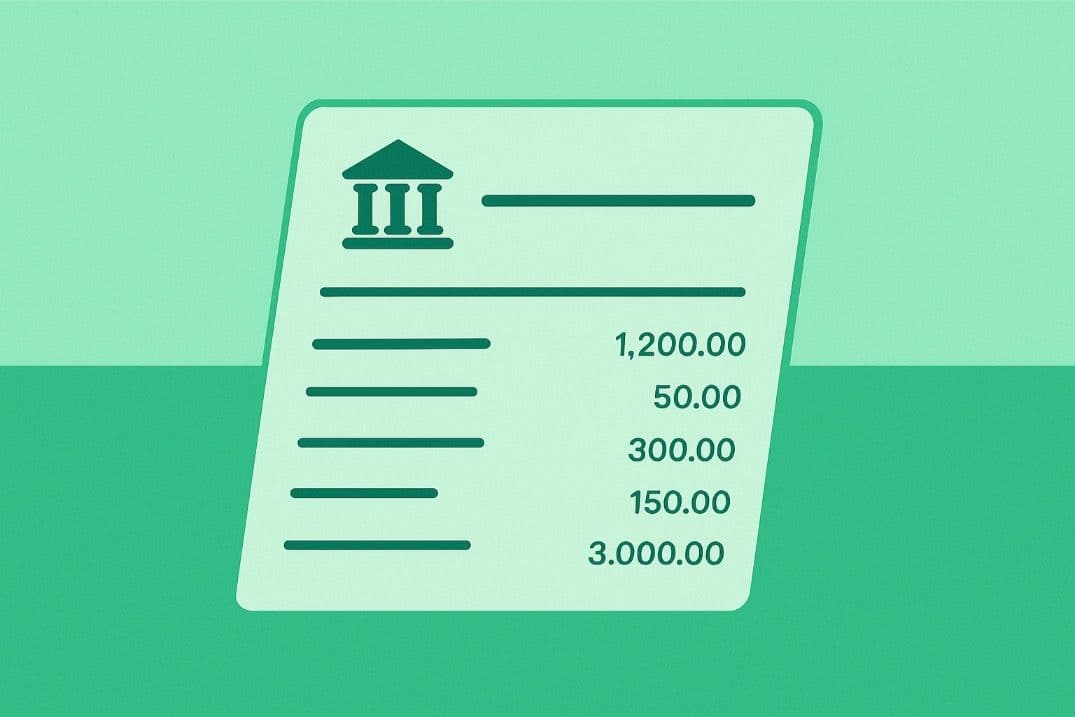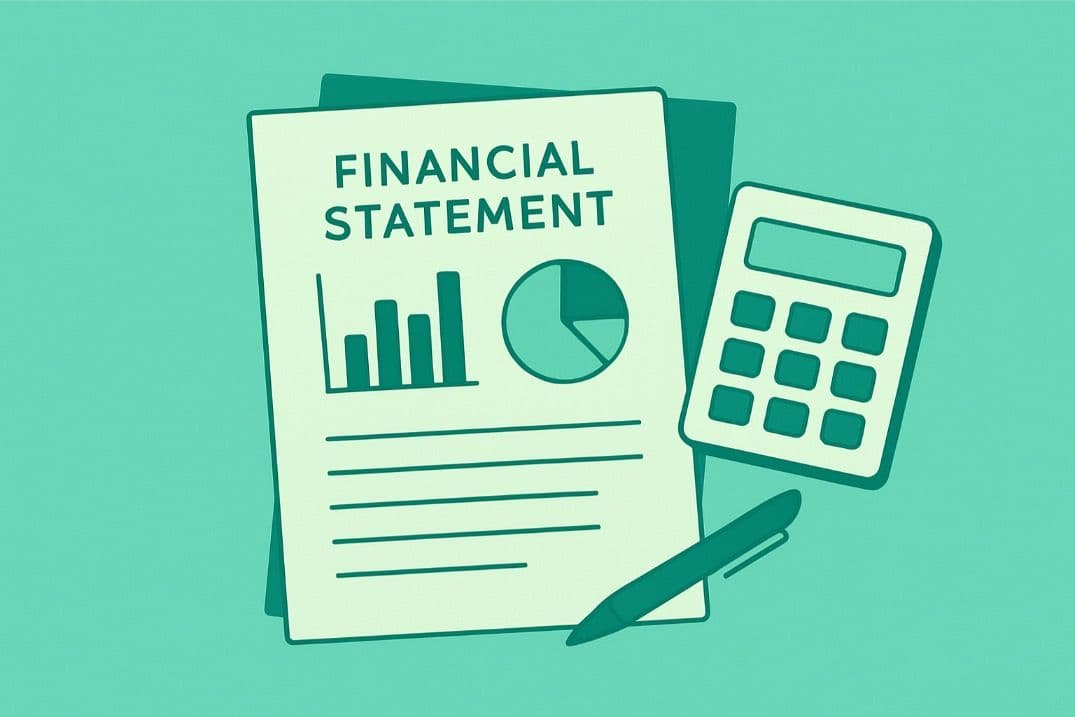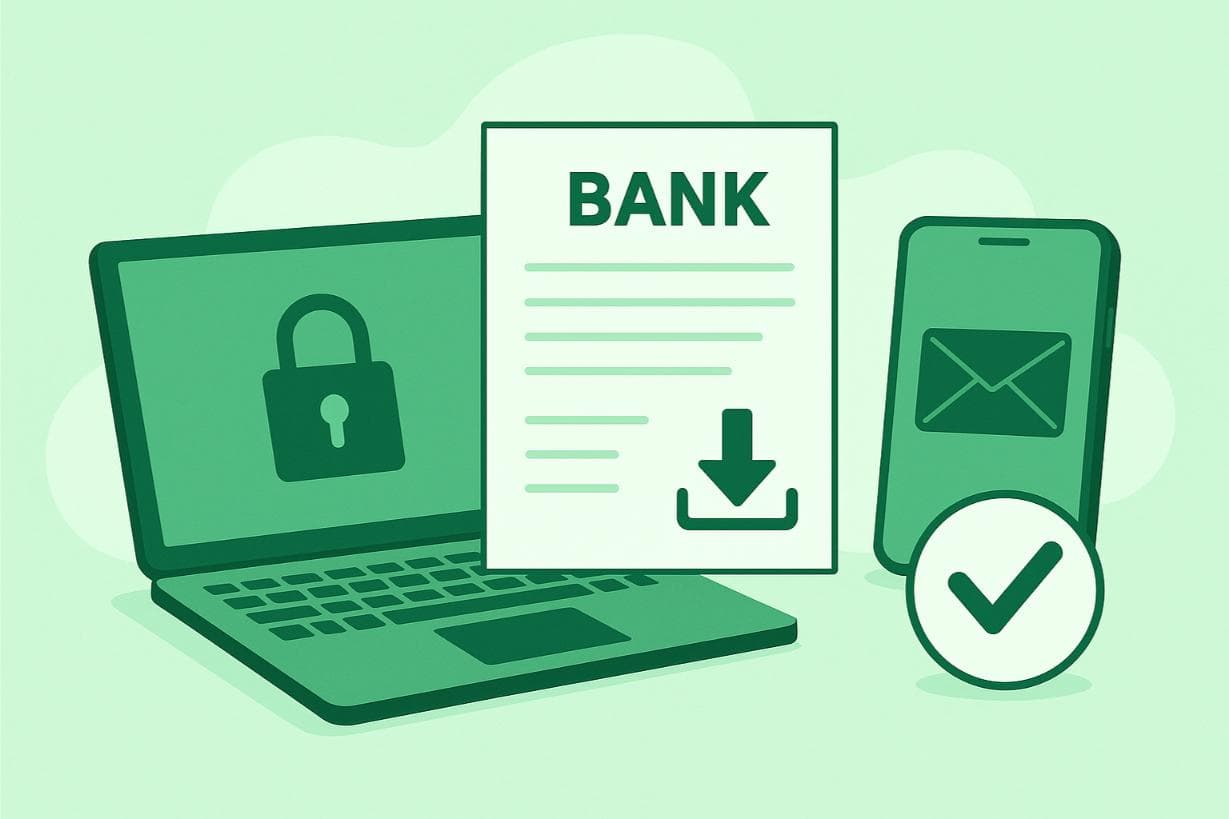What is Bank Statement Verification? A Complete Guide
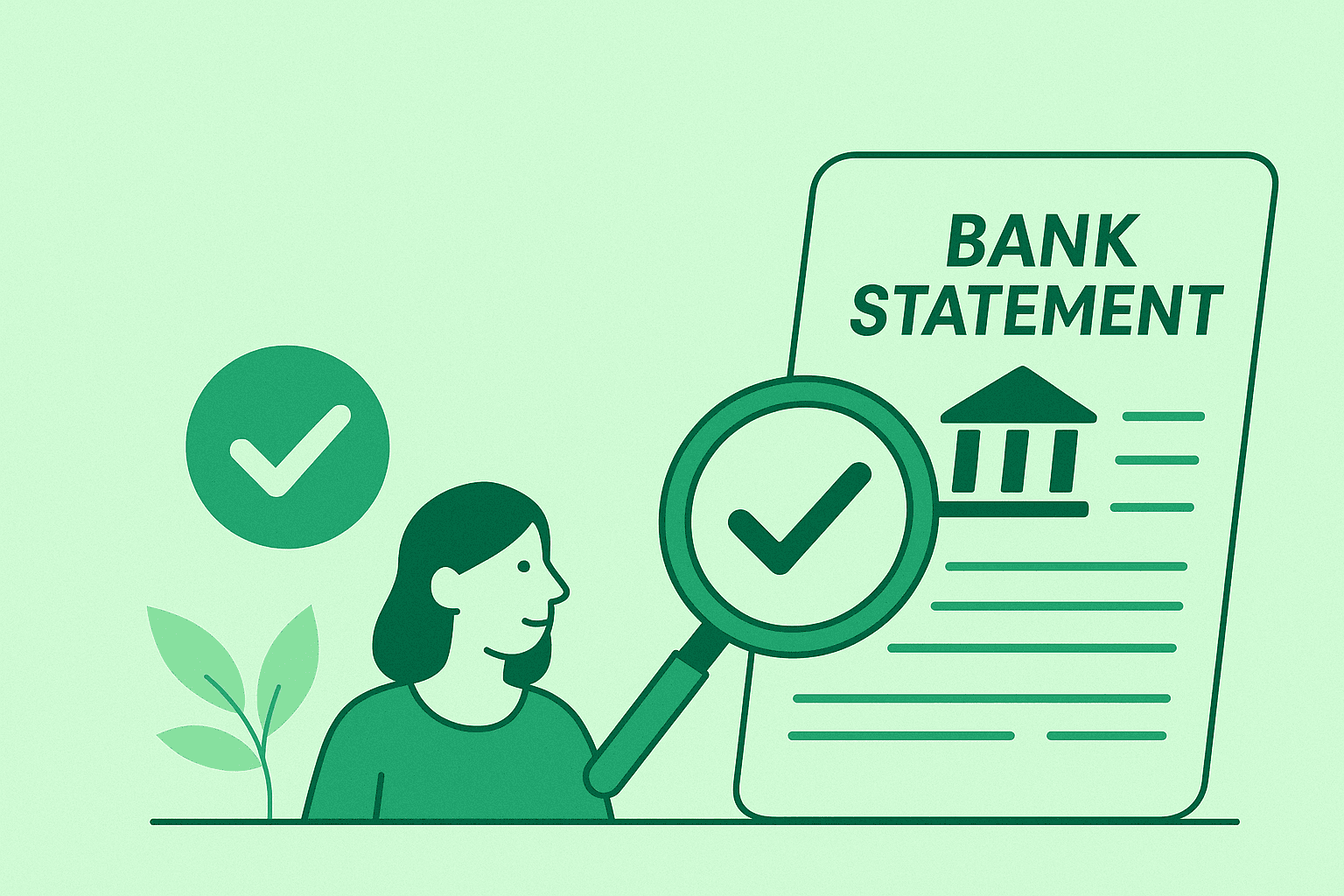
Bank statement verification checks if a bank statement is accurate. It involves cross-referencing the statement with bank records to confirm transactions and account details. It assists in the detection of fraudulent activities.
Banks, lenders, auditors, and corporate house owners utilize bank statement verification for income verification, fraud identification, and compliance with regulations.
It plays a predominant role in safe financial decision-making since it gives reasonable assurance that the provided information is valid.
With advances in financial crimes, businesses tend to lean more on technology-driven solutions like bank statement verification software, which uses OCR and AI for more reliable extraction and fraud detection.
Key Verifications for Ensuring Bank Statement Accuracy
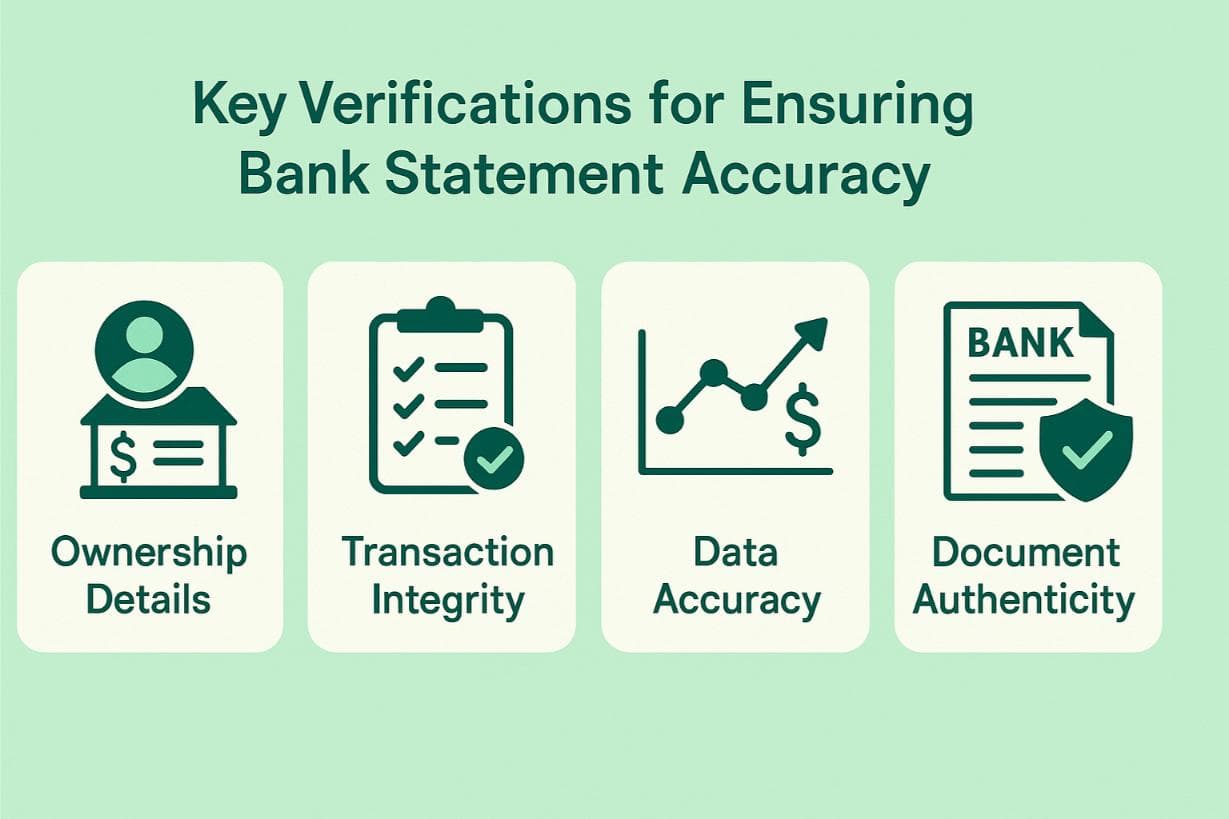
A thorough verification process includes checking the following:
- Ownership Details: The statement should belong to the right account holder, and the name and account number should match official records.
- Transaction Integrity: Deposits, withdrawals, service fees, and interest payments must be valid and reflect banking activity.
- Data Accuracy: Balance, dates, and transaction history should align with other financial documents.
- Document Authenticity: Elements like bank logos, formatting, and security features must be consistent with genuine statements.
Bank statement verification is widely carried out by financial institutions, auditors, and fraud prevention departments to identify discrepancies, fight financial fraud, and ensure regulatory compliance.
Since bank statements are often used as proof of income, financial standing, or creditworthiness, it is important to verify their authenticity. Without proper verification, manipulated or forged statements can result in fraudulent transactions, inaccurate assessments, and financial losses.
Strict verification measures help businesses maintain trust, minimize risks, and uphold regulatory standards.
Why is Bank Statement Verification Important?
A survey found that 69% of financial professionals expect financial fraud to increase. It demonstrates that bank statement verification plays a critical role in fraud prevention. Some key reasons include:
- Preventing Fraud: Identifying falsified statements, altered figures, or fake transactions.
- Confirming Income: Using bank statement verification to assess an applicant’s loan repayment ability.
- Validating Transactions: Ensuring financial records match actual transactions.
- Ensuring Compliance: Confirming compliance with anti-money laundering and customer regulations.
- Enhancing Audit Accuracy: Relying on verified bank statements to confidently complete financial reports.
How to Perform Bank Statement Verification
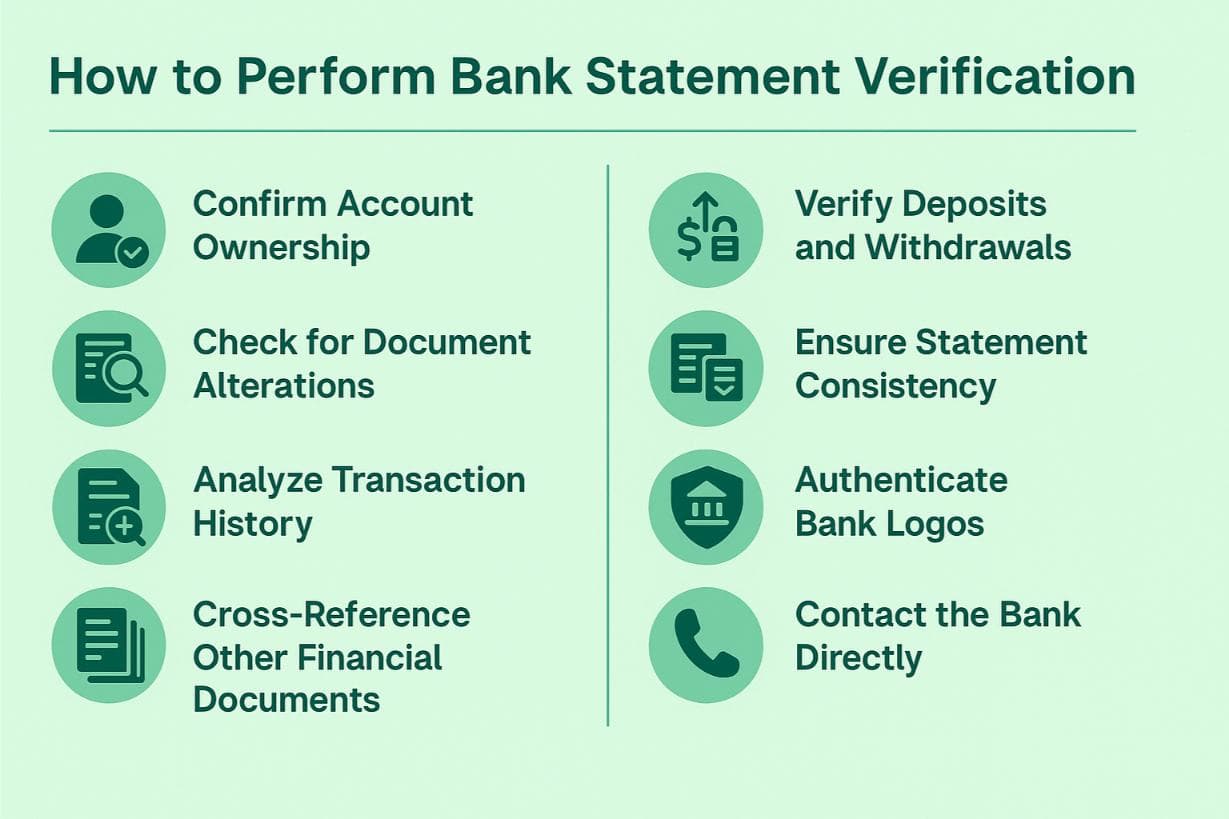
Bank statement verification can be done manually or by using automated tools. Below is a step-by-step process to perform manual verification:
1. Confirm Account Ownership
The first step is to check whether the account details match the individual or business claiming ownership. Verify:
- Account holder’s name
- Account number
- Address and contact details
Discrepancies like misspelled names or mismatched numbers could indicate fraudulent activity.
2. Check for Document Alterations
Fraudulent bank statements often display signs of tampering, such as:
- Inconsistent fonts, colors, or formatting
- Misaligned text or unusual spacing
- Poor print quality or pixelated logos
To ensure authenticity, request an official statement directly from the bank or use certified copies.
3. Analyze Transaction History
Read the bank statement details careful to find the following:
- Unusual patterns (e.g., repeated round numbers)
- Large, unexplained deposits or withdrawals
- Inconsistent spending behavior
A thorough analysis of financial transactions can uncover attempts at financial misrepresentation.
4. Cross-Reference Other Financial Documents
Compare the bank statement with other financial records, such as:
- Tax returns
- Pay stubs
- Invoices and receipts
Discrepancies between documents could indicate falsification.
5. Verify Deposits and Withdrawals
Validate all transactions have corresponding proofs, such as:
- Cleared checks
- Wire transfer confirmations
- Payment receipts
Any missing records should be investigated further.
6. Ensure Statement Consistency
Compare multiple consecutive bank statements to check for continuity:
- Matching the ending balance on one statement with the starting balance on the next
- Cross-checking for missing pages or unexplained balance changes
A break in the expected sequence can indicate potential tampering.
7. Authenticate Bank Logos and Stamps
Ensure official elements such as bank logos, watermarks, and stamps match the issuing bank’s records. Fake statements often contain incorrect branding details.
8. Contact the Bank Directly
If discrepancies remain, verify the document with the issuing bank to confirm its legitimacy.
Modern Technologies for Bank Statement Verification
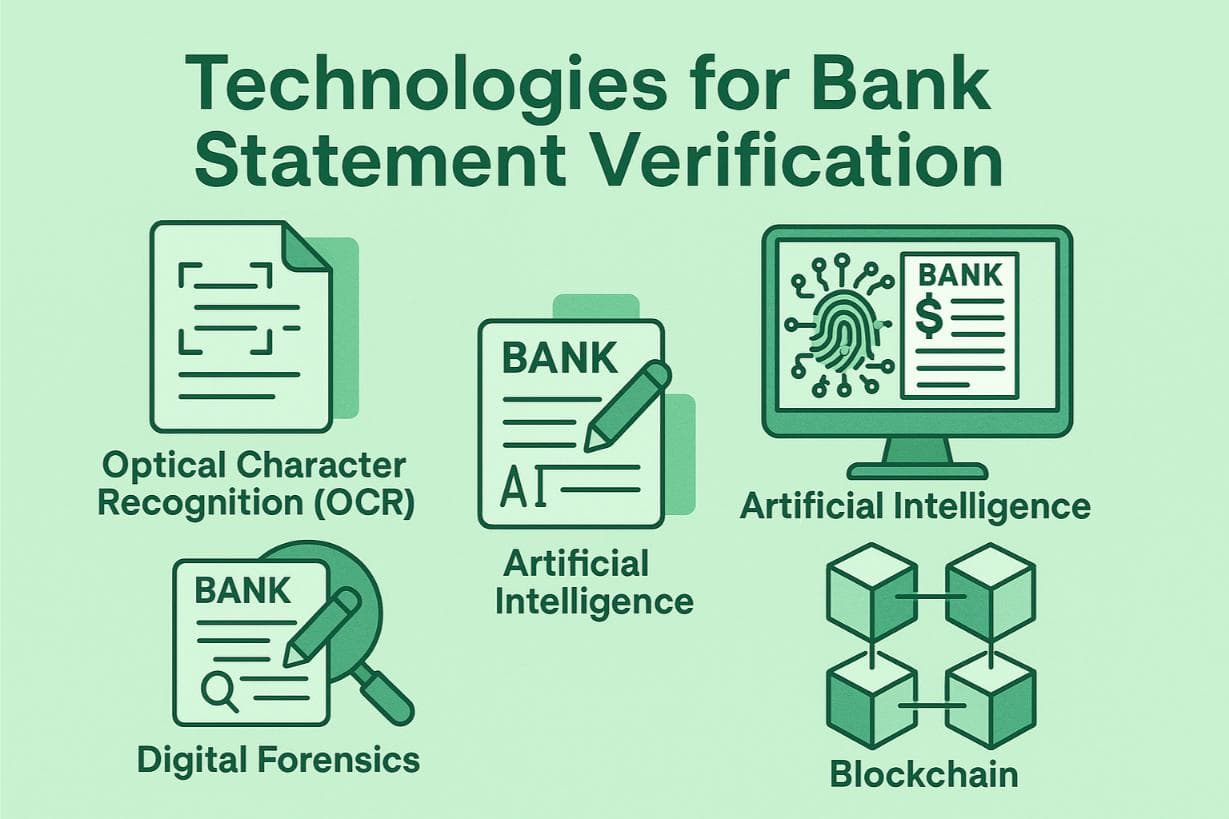
Many bank statement extraction tools combine OCR and AI to automate large-scale verification and streamline compliance.
With increasing fraud risks, businesses are investing in advanced verification methods. The following are relevant technologies:
Optical Character Recognition (OCR)
OCR-based bank statement verification software helps extract and analyze text from scanned statements for formatting issues, spelling errors, and adjusted figures.
Artificial Intelligence (AI)
AI verification tools work on fingerprints for transaction patterns, find anomalies, and detect falsified documents.
Digital Forensics
Forensic tools can trace the edit history of digital bank statements that expose any unauthorized modifications.
Blockchain
Emerging blockchain solutions provide an immutable record of financial transactions by making falsification nearly impossible.
The Future of Bank Statement Verification
As fraud methods continue to evolve with the latest available technology, companies are increasingly adopting automated verification solutions.
Research indicates that 74% of businesses are planning to invest in technology to detect financial fraud.
The use of bank statement verification software increases security, while speed, reduced errors, and less manual effort serve as additional benefits.
Conclusion
The verification process of bank statements is essential for financial institutions, lenders, and auditors.
It establishes a financial integrity system that prevents fraud and improves compliance with banking regulations, whether performed manually or through automated tools.
Investing in bank statement verification software is essential for any business dealing with large volumes of financial data. For seamless integration into accounting platforms, many firms also adopt bank statement APIs to automate verification at scale.
As technology advances, its application will enhance verification processes, helping to detect corruption in numerous financial transactions conducted by firms.
FAQs About Bank Statement Verification
What does bank statement verification mean?
The bank statement verification involves confirming its authenticity and consistency, as well as ensuring that the recorded financial activities of the account are accurately represented.
How do I check bank transactions?
Verify the transactions against the cleared checks, wire transfers, deposit receipts, and other relevant documents.
What are the red flags in a bank statement?
Check for mismatched fonts, blurred text, altered logos, and transaction amounts that are suspiciously rounded. Businesses and individuals can perform their due diligence to protect themselves from fraudulent activities by employing these best practices.
